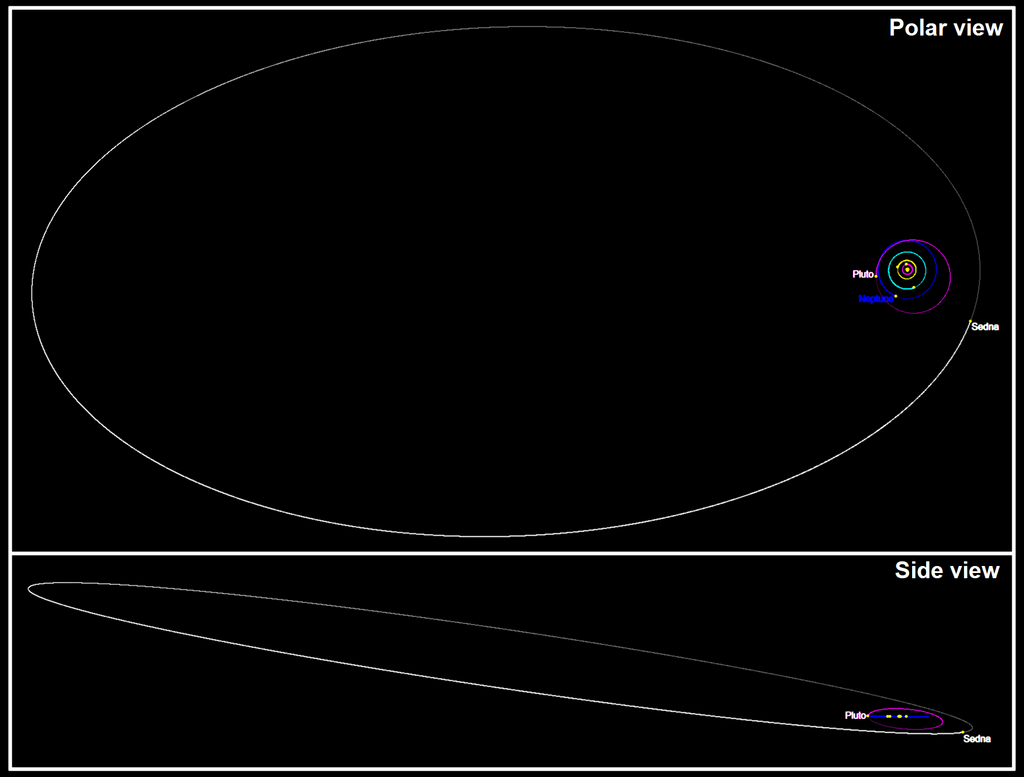Sedna’s Orbital Eccentricity
After publishing the previous blogpost, I started looking into the orbits of some of the other objects in the Trans-Neptunian System. These objects are referred to as TNO’s. (Trans Neptunian Objects)
I wasn’t very familiar with what’s really out there in this outer solar system region. First, I googled Sedna’s orbit. Sedna’s orbital eccentricty is quite high. It’s orbit is a lot more elliptical. Compared to the somewhat circular (not as elliptical) orbits from Mercury to Pluto.

Most of the planetary bodies in the in the inner solar system have a much lower orbital eccentricity. With the exception of Mercury in the inner solar system. And Pluto (downgraded to a dwarf planet) in the outer solar system. Even then, Sedna’s orbital eccentricity is way higher. (Or the other TNOs at that).
| Object | Orbital Eccentricity |
|---|---|
Mercury |
0.2056 |
Venus |
0.0068 |
Earth |
0.0167 |
Mars |
0.0934 |
Jupiter |
0.0484 |
Saturn |
0.0542 |
Uranus |
0.0472 |
Neptune |
0.0086 |
Pluto |
0.2488 |
Sedna |
0.84259 |
- In fact, if you go to the following page on Wikipedia Extreme Trans-Neptunian Objects and scroll down just a bit to the table. Then, you will see that all of the objects have a very high rate of orbital eccentricity.
- Pictorial representation below. Note, ‘Objects’ (because planets and other masses are clumped together here) up until Neptune are in the inner circles.

The questions that I am thinking of: * To begin ith, why are the orbits of TNOs so elliptical? * There must be a relation with regards to the mass of an object and the gravitational pull acting upon. * Why doesn’t Sedna and all of these other TNOs get ejected from the solar system? * If Sedna/TNOs are in more than one orbit? For example, orbit around the sun and then orbiting around a black-hole? * If Sedna/TNOs are indeed in more than one orbit, then there must be a clever way to figure this out. There must be a change, a dip in their orbit as it swaps from being in the gravitational hold of one object to another. * As Sedna/TNOs swap orbits, there must be fluctuations in it’s velocity. These fluctations could then be measured. Perhaps by on-board instrumentation. The problem is that these orbits are long. For example, Sedna’s orbit around the sun is 11,408 years.
Overall: So far there is no evidence that Planet X exists. There have been other theories that have been put forth. For example, this theory that I just read about, a collection of icy bodies making a disc of sorts. link
My uneducated and intuitive guess is that the theory of an actual black-hole in the outer solar system makes more sense.
All images courtesy of Wikipedia. * Source - Sedna * Source - Extreme TNO